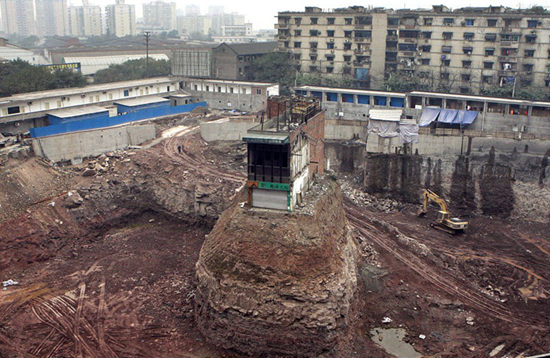
Despite the emergence of highways, shopping malls, frighteningly deep pits and even moats around them, the tenacious owners of these older structures refused to give in to developers, remaining in their increasingly incongruous homes. In China, they’re referred to as ‘nail houses,’ like stubborn nails in wood that can’t be pounded down; American developers call them ‘spikes.’ Most of them are ultimately demolished, but some stand like strange little monuments to the past.
1. Edith Macefield’s ‘Up’ House, Seattle
Framed on three sides by concrete, Edith Macefield’s tiny cottage in the Ballard neighbourhood of Seattle is strikingly out of place. But really, what’s out of place is the development that has sprung up around her 108-year-old farmhouse, which served as inspiration for the Pixar movie ‘Up’. Macefield purchased the house in the ’50s and lived there until her death in 2008, even after the rest of the homes on her street were gone, refusing to give in to developers who ultimately ramped up their compensation offers to US$1 million plus a new home and nursing care for the rest of her life. Macefield felt she was too old and frail to move. But during the last years of her life, she struck up a friendship with the superintendent of the construction project, and left her home to him. Instead of allowing it to be swallowed by the complex, he sold it to someone who turned it into an office. As of 2014, the house still stands.
2. Luo Baogen House
Drivers cruising along a highway in Wenling, China, had to slow down and drive around one heck of an unusual roadblock: the five-story home of duck farmer Luo Baogen, the sole holdout from a neighbourhood that was demolished to make way for the new thoroughfare. When Luo refused developers’ offers, they simply built around him, assuming that being in the middle of a construction zone and later, a highway would drive him out. In the end, it was all the media attention that did it. Despite having paid US$95,000 to build it just a few years earlier, Luo accepted an offer of US$41,000 and consented for the house to be razed.
3. Pinghe Crossroads House, Fujian Province, China
What happens when multiple people own space in a single building, and some sell while others won’t? In some cases, builders literally tear down everything but the sliver of the structure belonging to the holdout. This jagged nail house at a crossroads in Pinghe, China is all that’s left of an entire apartment building.
4. Austin L. Spriggs House, Washington D.C.
A tiny townhouse clung to its little plot of land in Washington D.C. even as a four-story-deep crater appeared around it, with just three feet of earth separating its walls from a 40-foot drop-off. Owner Austin L. Spriggs, who used the building as an office for his architecture firm, refused to even engage with the developers, who finally decided they would just build around it. It’s now a curiosity crammed between condos and commercial buildings. In 2011, it sold for US$800,000 to someone who plans to turn it into a restaurant.
5. Wu Ping House, Chonqing, China
Wu Ping of Chonqing didn’t want to move either, despite the fact that all of her neighbours had agreed to make way for a new shopping mall. But the developers were bent on seeing the demolition of her house, which stood almost in the exact centre of the building site. They dug out the earth around it in the hopes that it would force her to leave. Even when she had to start climbing a steep earth wall to get to her home, raising and lowering supplies on pulleys, Wu Ping refused. She didn’t leave until the compensation offer reached one million yuan plus a new apartment. The house was finally demolished in April 2007.
6. Traffic-Blocking Nail House in Shanghai
Traffic routes awkwardly around this nail house in Shanghai, the highway narrowing to just two lanes around the building. For owner Xu Jun, taking the government’s compensation not only means letting go of the house for far less than it’s worth, but also losing revenue streams from the small businesses located on the ground floor. The area around the home became known for car accidents, but Xu refused to apologize for fighting, asserting that the local government was conspiring with developers to cheat middle-class families. It’s not clear whether the home was ever demolished.
7 & 8. Gothic Townhouse and Queen Anne, New York City
Take an observant walk around New York City, gazing up at the architecture, and you’ll notice that it’s studded with buildings that seem entirely out of place, squeezed into awkward niches between newer structures. New York has changed dramatically and rapidly over the centuries, and in the past, when property owners refused to move, developers just shrugged and built around them.
One example is a small Gothic-inspired townhouse flanked by pre-war apartment buildings; another is a Queen Anne house in Washington Heights that has since been converted to a church. See more at Ephemeral New York.
9. Kunming House Surrounded by a Moat
The developers working on a new project in Kunming, China weren’t playing around when they set out to intimidate the owner of the lone remaining structure on their building site. The standoff began when the developers offered Zhao less than his property was worth, and he continued to live in the building with his wife and 83-year-old mother even as the rest of the buildings in the complex were torn down. So the builders began digging a ditch, taking out more and more earth each day, knocking out the electrical and plumbing connections in the process. Rain filled it with water, creating a moat that Zhao had to cross in order to get to and from his house. Unfortunately, the fate of Zhao and his family home is unclear.
10. Nail Tomb, Taiyun City, China
Not all nail houses are ‘houses,’ per se. Sometimes, they’re tombs. As a multi-storey residential complex took shape on the former site of a cemetery in the city of Taiyuan, a lone grave remained, sitting on top of a 30-foot-tall tower of mud created when the land around it was excavated. The family of the deceased refused an offer to compensate them for the land, saying they couldn’t understand why the developers had to build on this particular spot.
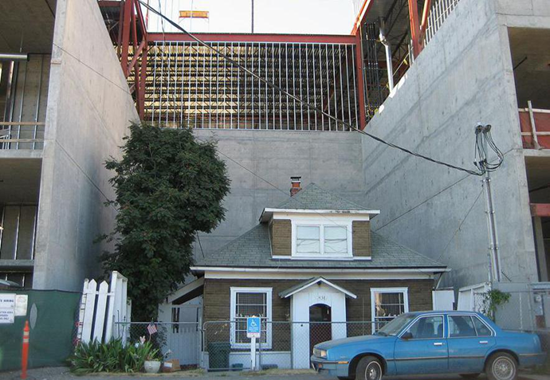
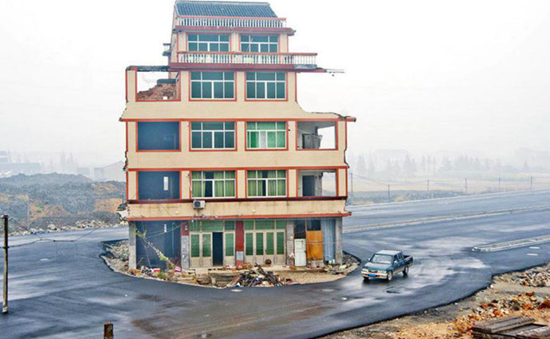


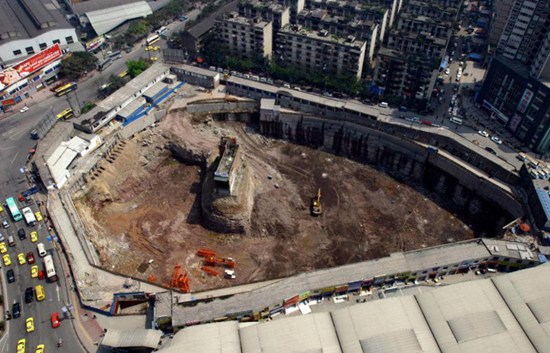
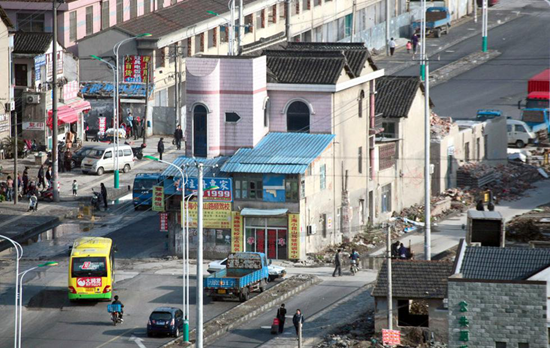
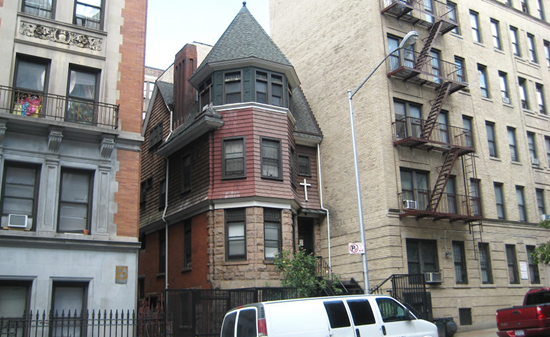
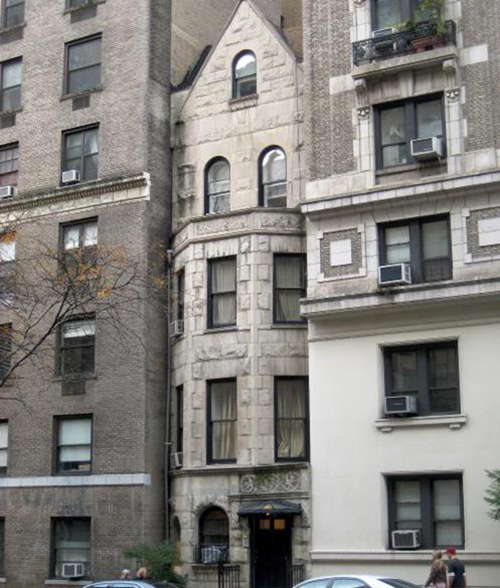
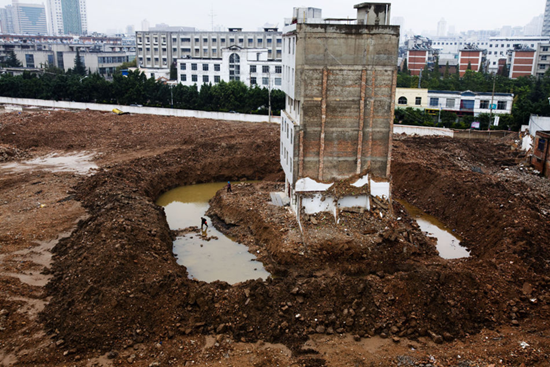
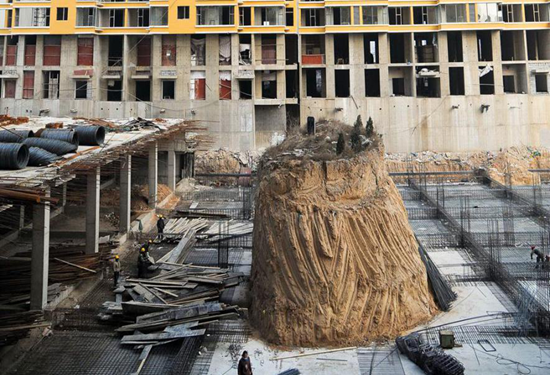
No comments:
Post a Comment
Please adhere to proper blog etiquette when posting your comments. This blog owner will exercise his absolution discretion in allowing or rejecting any comments that are deemed seditious, defamatory, libelous, racist, vulgar, insulting, and other remarks that exhibit similar characteristics. If you insist on using anonymous comments, please write your name or other IDs at the end of your message.